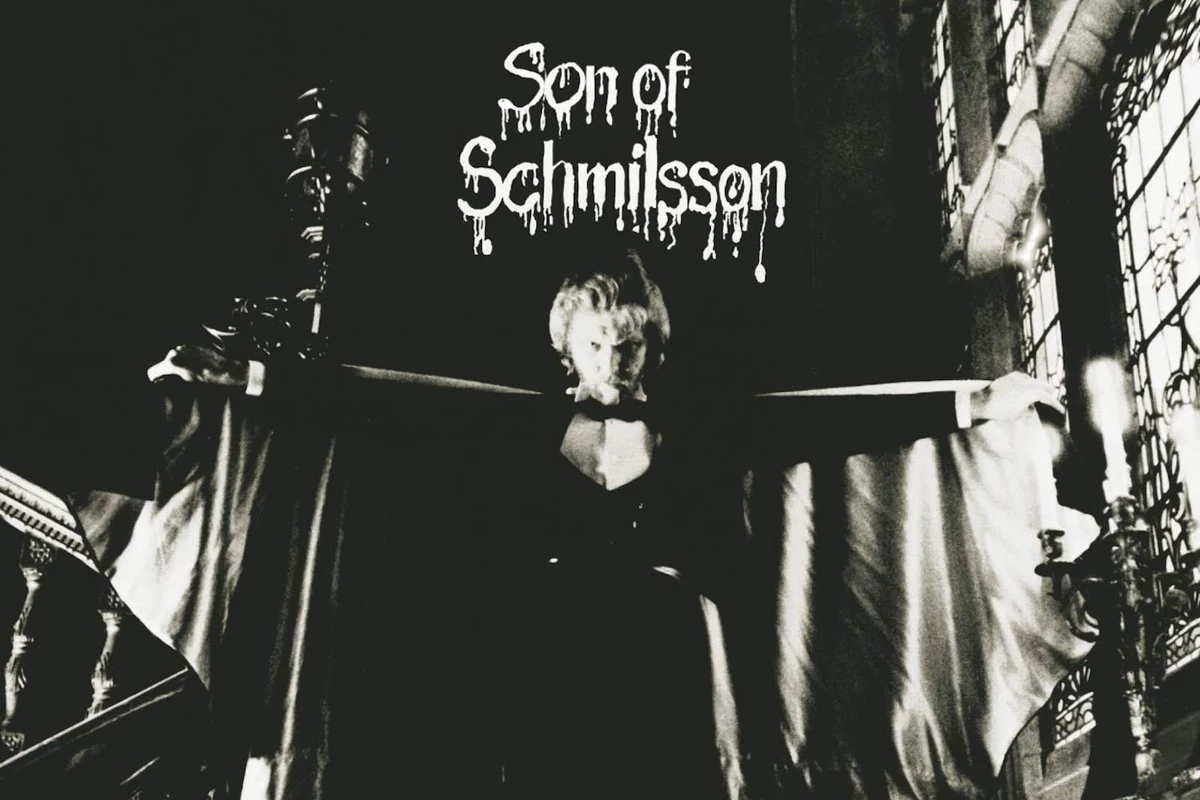How Harry Nilsson Headed For The Ditch In ‘Son Of Schmilsson’

Harry Nilsson’s long-awaited breakthrough with Top 5 gold sales success Nilsson Schmilsson had his record label hoping for a sequel. From the title, it looked like he delivered one on July 10, 1972.
But it was Harry Nilsson. Instead, the guest packed Son of Schmilsson happened as an eccentric oddity, something that might have only been possible in the freeform decade in which it was created.
“My approach would have been to simply pick up where Nilsson Schmilsson interrupted,” producer Richard Perry said in the liner notes of a Son of Schmilsson reissue. “Distinctively brilliant Nilsson vocals, songs that maintained our artistic integrity but at the same time had great commercial value. If Nilsson Schmilsson was our Revolver, [let’s] Craft Son of Schmilsson our sergeant. Pepper.”
Only Nilsson felt like he was in a trap of his design. “By repeating the formula, you can fix it, improve it, and get rid of all the chaff,” he admitted at the time. “But on the other hand, you run the risk of grinding the formula into the ground by repeating it and letting it become just a formula. It’s scary.”
In the end, there was no danger of this happening on Son of Schmilsson. Even his most accessible song, “You’re Breakin’ My Heart,” was commercially dead when it arrived, despite a backing band that included George Harrison, Klaus Voormann, Peter Frampton and Nicky Hopkins. There was a question at RCA as to whether to even include the track after Nilsson took a stunning lyrical twist: “You’re breaking my heart, you’re tearing it up – so fuck you.”
“He sat down and started playing this song really well, and everyone pays attention, and then he gets to ‘So fuck you,’ Frampton said in the liner notes for the reissue.” I mean, we just didn’t expect this! It was a big shock.”
Listen to Nilsson’s “You’re Breakin’ My Heart”
It wasn’t creative license on Nilsson’s part, as he was going through a divorce. As a result, a sense of sad displacement tends to permeate Son of Schmilsson, even as Nilsson falls to the bottom of a liquor bottle. He rages at his isolation on the opening “Take 54” (“I sang my balls for you, baby… but when I woke up I was alone“), then breaks away from gravity on the No. 23 hit “Spaceman”.
“I don’t quite understand to this day why [the divorce] hit him so hard, but maybe he interpreted it as a failure in him,” Perry said in 2013. Nilsson: The Life of a Singer-Songwriter. “It was to start what was a downward spiral for the rest of his life. He would show up at the studio with half a bottle of cognac. The first half had already been consumed that afternoon.”
“Remember (Christmas)” predictably leans towards the maudlin, as Nilsson laments that “love is only in a dream“Joy” is, of course, about anything but. “Turn On Your Radio” better balances its pain and desolation, but subsequent tracks like “I’d Rather Be Dead” and “Ambush” are more in tune. agreeing with the overall narrative tone here.A mischievous cover of the El Dorados’ “At My Front Door,” with its light-hearted undertones of infidelity, completes the picture.
“The guy was able to paint a picture of desperation or melancholy and he did it very well, economically,” Nilsson collaborator Van Dyke Parks later told Pop Matters. “He could do all of that in one song. I think it was an amazing combination, to be able to deliver sentimentality and a sense of irony.” The main element that maintains Son of Schmilsson to step off the ledge is his bubbly musical schizophrenia.
Listen to “The Most Beautiful World in the World” by Nilsson
“Take 54” emerges as a kind of shag-drenched funk, while “Remember (Christmas)” is simply angelic and “Joy” deliciously cornpone. “I’d Rather Be Dead” ends with a raucous chant featuring nursing home residents. (One of them had a creaking wooden leg, needing a new take.) “The Most Beautiful World in the World” wraps things up with a jaw-dropping amalgamation of every big and impossibly indulgent impulse Harry Nilsson has ever had. had.
And this is perhaps the fairest assessment of Son of Schmilsson: He finds an artist in the wild, completely free – with all the pros and cons that entails.
“There was a lot of subtlety in his work,” Parks explained. “And I think that wasn’t lost on the casual observer at the time. But I think it’s also part of the structure that keeps him upright, available and enjoyable today. It took courage to get that kind of writer and character in a song form that was not an easy thing to market at the time.”
In between are hearty burps, weird studio chatter, and B-movie sound effects. This is that kind of record. Thus, Nilsson was able to sneak up to No. 12 on the Billboard chart, but arguably solely due to early sales to new fans of his earlier, much more mainstream LP.
Something was unfortunately lost along the way: Son of Schmilsson didn’t end up like Nilsson and Perry sergeant. Pepper. Despite a verbal assurance at the end of “The Most Beautiful World in the World” (“Goodbye Harry”; “See you soon, Richard”), it was rather their So be it.
Nilsson continued further down a non-commercial path with 1973 A little touch of Schmilsson in the night, a standard album produced by Beatles associate Derek Taylor. Perry never worked with Nilsson again.
Top 100 Rock Albums of the 70s
From AC/DC to ZZ Top, from “Bridge Over Troubled Water” to “London Calling”, they are all there.
